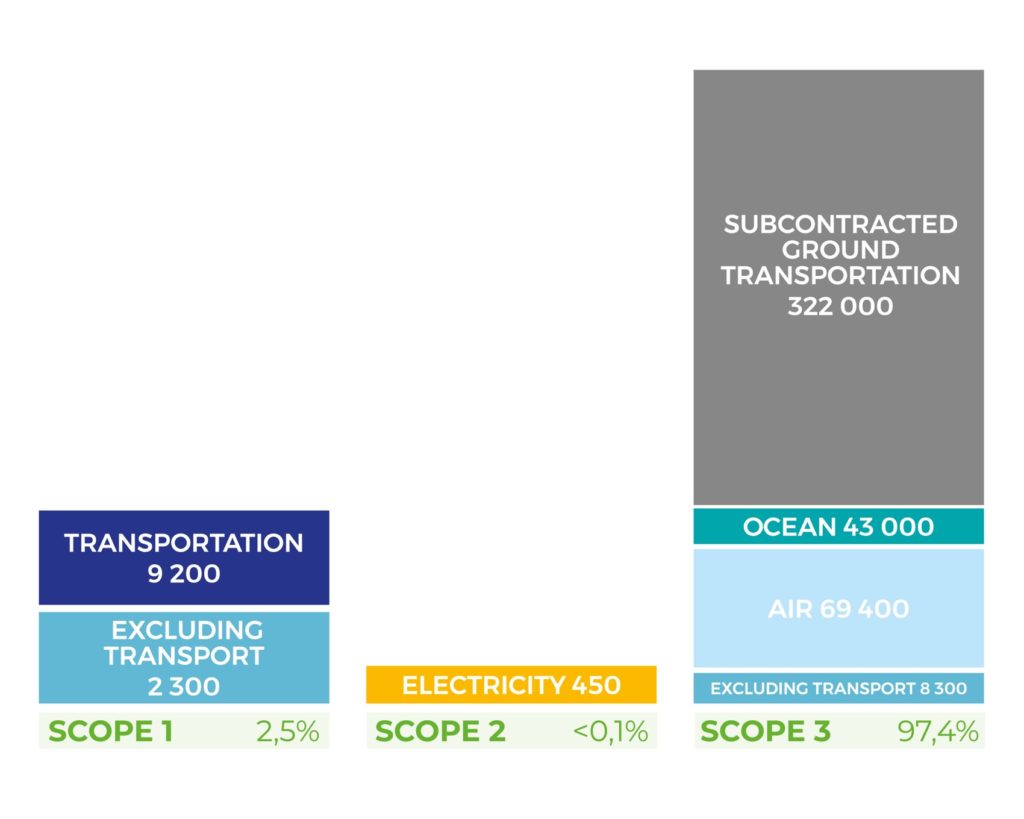Our carbon footprint: Measure to act
Did you know?
The carbon footprint is the measurement of the greenhouse gases of an activity (product, service, company…). Indeed, all human activity generates greenhouse gases (GHG) through the combustion of fossil fuels (heating, transportation…), construction, livestock farming, deforestation… The unit of measurement and expression is the tonne of CO2 (t CO2-eq), which includes all GHG.
Transportation is the activity that contributes the most to France’s GHG emissions. In 2019, it represented 31% of French GHG emissions. Almost all of the GHG emissions induced by transportation (97%) are CO2 from fuel combustion.
The CO2 scope of measurement is:
- CO2 directly emitted by the company (heating, vehicle fuel),
- the CO2 emitted by the consumption of electricity,
- the company’s upstream and downstream emissions (subcontracted transport, waste products, product use, end of life, etc…)
Heppner’s carbon footprint
In order to measure and manage its emissions reductions, Heppner uses the international Science Based Targets initiative (SBTi) – which is aligned with the objectives of the Paris Agreement to limit global warming to well below +1.5-2ºC.
The approach is specific to the transportation sector, with 2018 as the base year.



